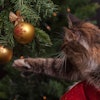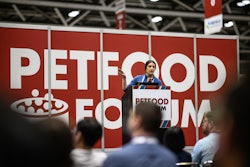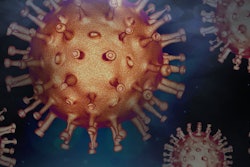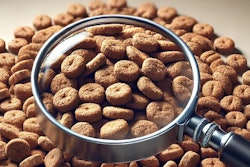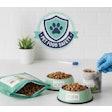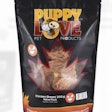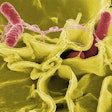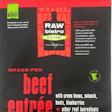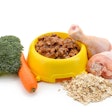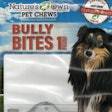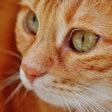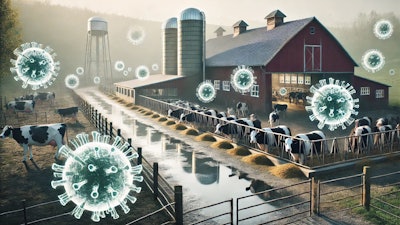
Health officials investigated two mysterious cases of highly pathogenic avian influenza (HPAI) in cats, and published their findings in the Centers for Disease Control’s (CDC) Morbidity and Mortality Weekly Report. In both cases, the cats’ owners stated that the animals were strictly indoor pets and hadn’t been exposed to wildlife that could have harbored the virus. However, the cats’ owners worked on dairy farms in Michigan. The virus may have been spread from livestock to human to cat, although researchers were unable to prove this.
Household 1: The first cat, a 5-year-old spayed female domestic shorthair, came to the veterinarian with decreased appetite, disorientation and lethargy. Despite treatment, the cat's condition deteriorated rapidly. The cat was put to sleep on the fourth day of illness. Post-mortem analysis confirmed HPAI A(H5N1) infection. The owner, a dairy farmworker, reported removing work attire outside the home and had no direct contact with infected animals. Other household members tested negative for the virus.
Household 2: The second case involved a 6-month-old male Maine Coon kitten exhibiting sudden neurological decline. The kitten succumbed within a day of symptom onset. Diagnostic tests confirmed HPAI A(H5N1) infection. The owner, involved in transporting unpasteurized milk from various dairy farms, reported frequent exposure to milk splashes and did not change work clothing before entering the home. This owner also declined testing and antiviral protection.
Despite the dairy connections, the exact transmission route to these indoor cats remained undetermined. Given the absence of direct exposure to infected birds or consumption of raw poultry, CDC officials considered indirect transmission to be plausible via contaminated clothing, footwear, or environmental surfaces. The owners' occupational exposure to dairy farms with known HPAI A(H5N1) cases suggests a potential vector for virus introduction into the household environment.
“Veterinarians evaluating companion cats with signs of respiratory or neurologic illness in areas with HPAI A(H5N1) virus circulating in cattle or poultry or other animals are recommended to wear PPE when examining these animals or collecting specimens for influenza testing and to obtain occupational information from household members to help prevent unprotected exposures and guide coordinated One Health (i.e., human, animal and environmental) public health investigations of potential animal-to-human spread of HPAI A(H5N1) virus,” CDC officials wrote in the report. “Implementation of standard precautions for zoonotic disease prevention and CDC guidance for veterinarians at veterinary clinics can help limit the number of staff members exposed to sick animals potentially infected with pathogens, including HPAI A(H5N1) virus. Further, given the widespread outbreak in animals, including poultry and wild birds, throughout the United States, anyone who has occupational or recreational exposure should wear the recommended PPE when interacting with any potentially infected animals.”
Risks of avian influenza from cat food
More than 80 cases of domestic cats infected with highly pathogenic avian influenza have occurred in the United States since 2022, according to the U.S. Department of Agriculture’s Animal and Plant Health Inspection Service. Most of these cases involved cats that lived outdoors and likely were in contact with infected wildlife or livestock.
However, in late 2024, several instances occurred in which it seems that pet cats contracted the virus from raw pet food or unpasteurized milk. In Los Angeles County, public health officials confirmed seven cases of H5 bird flu in cats and warned that more cases likely were not detected or tested in laboratories. In Oregon, one allegedly indoor cat caught HPAI virus and subsequently died after eating Northwest Naturals raw frozen turkey pet food. The brand recalled one batch of this product after it tested positive for HPAI, although others challenged these results.
The U.S. Food and Drug Administration (FDA) is requiring pet food manufacturers subject to the FDA Food Safety Modernization Act (FSMA) Preventive Controls for Animal Food (PCAF) rule to reanalyze their food safety plans to address H5N1, a strain of Highly Pathogenic Avian Influenza. The requirement applies to manufacturers using uncooked or unpasteurized ingredients such as meat, milk or eggs derived from poultry or cattle in cat and dog food.
The FDA recommends the following practices to minimize H5N1 risks:
· Source ingredients only from healthy herds or flocks.
· Implement processing steps such as heat treatment, which has been shown to inactivate the virus in meat, milk and eggs.
· Establish supply-chain controls to verify ingredients are free of H5N1 contamination.
The agency has also provided resources and scientific literature to help manufacturers update their plans. Companies that implement preventive controls will contribute to protecting pet health and reducing the spread of H5N1.

